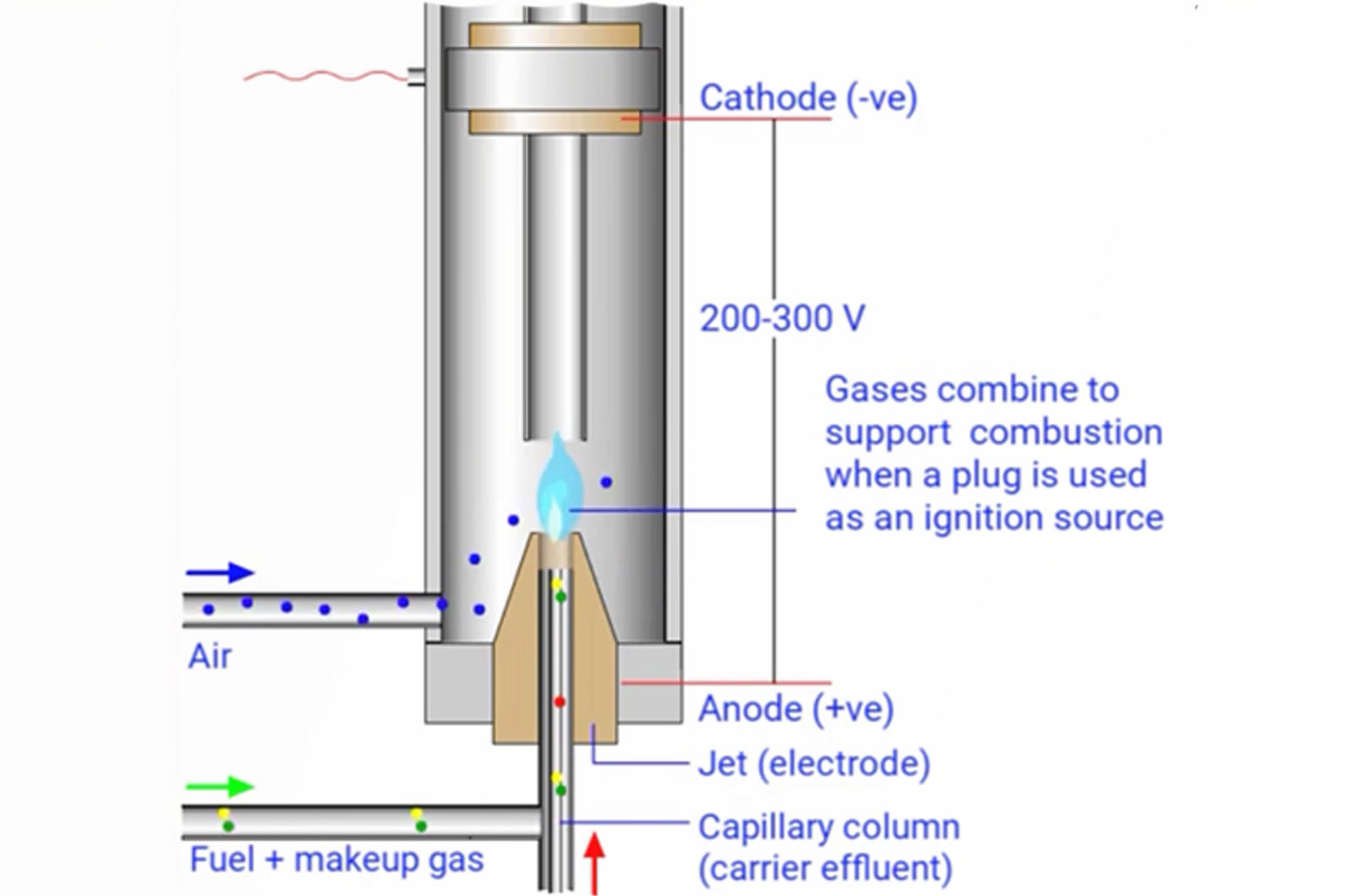GC Detectors
All GC detectors monitor a physical property of the analyte - the property chosen must significantly change and, therefore, cause a large detector response when the eluent gas flowing in to the detector contains the analyte. The aim of this module is to highlight the various detector types available for GC and describe the performance characteristics associated with these detectors. The working principles behind flame ionization, electron capture, nitrogen phosphorous, thermal conductivity, and flame photometric detectors (FID, ECD, NPD, TCD, and FPD, respectively) are explained, as well as the optimization process for each of the detector types. We will also mention and highlight the description and use of various other detector types.
At the end of this section, you will be able to explain the parameters and performance measures by which GC detectors are characterized, describe the components and working principle of a number of common GC detectors, give suggestions of how each detector type might be optimized, demonstrate an understanding of each detector type in a practical context, and choose the correct detector type for a variety of analyte and application types.
Topics include:
- GC detectors overview
- GC detector characteristics
- The flame ionization detector (FID)
- FID - operating and optimizing
- FID - uses and performance
- The nitrogen phosphorous detector (NPD)
- NPD - operating and optimizing
- NPD - uses and performance
- The electron capture detector (ECD)
- ECD - operating and optimizing
- ECD - uses and performance
- The thermal conductivity detector (TCD)
- TCD - operating and optimizing
- TCD - uses and performance
- Other GC detectors
- Flame photometric detector (FPD)
- Photoionization detector (PID)
- Electrolytic conductivity detector (ELCD)

